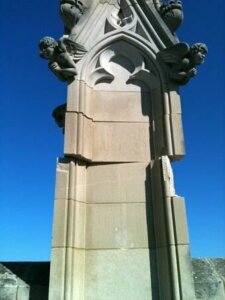Ten years ago Monday, a significant earthquake shook the D.C. area, causing damage to the Washington Monument, the National Cathedral and other landmarks.

The U.S. Geological Survey said that the magnitude 5.8 earthquake centered under Mineral, Virginia, on Aug. 23, 2011, was likely the most widely-felt earthquake in North American history, owing to the Eastern Seaboard’s population density.
“The 2011 earthquake in Virginia was significant in raising awareness of East Coast earthquake hazards and the importance of research to understand when and where earthquakes can occur,” said David Applegate, USGS associate director for natural hazards, said in a news release.
“Damaging earthquakes do not strike the eastern U.S. often, but the potential consequences of not understanding and planning for such events with their widely distributed shaking could be severe. The next significant earthquake on an eastern U.S. fault may not occur for hundreds of years, yet there is a small chance it could happen at any time.”
Experts say the region was lucky no lives were lost, though the earthquake was sure to leave its mark to the tune of between $200 and $300 million in property damage.
Some of those structures that were dinged up included the Washington Monument, which had masonry on all four of its sides damaged. The Washington National Cathedral suffered around $34 million in damages. The Smithsonian Institution Building, widely known as the “Castle,” also experienced damage.
- 2011 quake repairs at National Cathedral may take another 10 years
- LISTEN to some of WTOP’s coverage from 2011
This was all despite D.C. being some 80 miles away from the earthquake’s epicenter. Thomas Pratt, a USGS research geophysicist, said that there was heightened ground shaking in the region due to more pliable, underlying sediment that moves more while also holding more energy.
“Subsequent research identified that the underlying sediment is what led to amplified shaking,” Pratt said.
“We were familiar with that phenomena on the West Coast of the U.S. and internationally, but the Mineral earthquake showed the significance of this effect in the eastern U.S. The areas on sediment received significantly stronger shaking than nearby locations on firmer rock.”
Following the 2011 earthquake, experts now recognize that this amplification can be as severe in the eastern U.S. as has been observed in other parts of the country.









